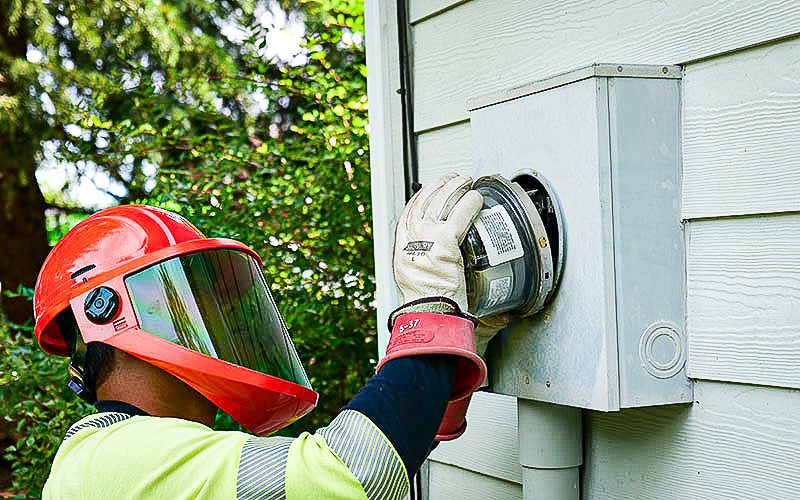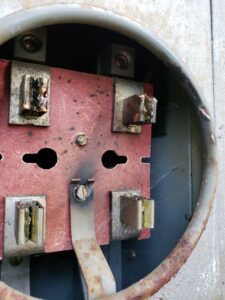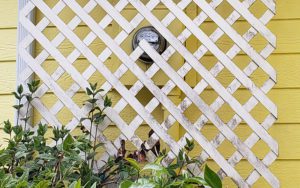Grid Modernization – Meter Replacement Process
Utility-wide replacement of aging meters with new advanced metering infrastructure (AMI) will begin on September 19th in Kala Point. Meter replacement will be done in zones over time, with full replacement projected by early-2024.
AMI meters provide multiple benefits to the PUD and its customers. While the PUD’s current meters are able to broadcast their reads for a truck to pick up while driving by, new AMI meters will send read data to the cloud, no trucks required. AMI meters are also able to receive signals as well as send them out. This allows the PUD the ability to turn meters on and off remotely–saving time and increasing safety in the case of a fire or outage, and saving money as well as time in the case of disconnects and reconnects. AMI meters are critical for incorporating renewable and dispatchable resources, like solar, wind, and battery storage. For customers who do not wish to have AMI meters, the PUD offers an Opt-Out Policy (details at the end).
Meter deployment updates will be provided on the PUD’s website, via social media, and the in the PUD’s print and electronic newsletter. Customers in zones where meters are being replaced will receive postcard and phone notifications. A map of meter replacement zones will be added to the website soon.

Meter Replacement Process
PLEASE NOTE: The resident or homeowner does not need to be present during the meter replacement process.
Residents within the installation area will receive a postcard mailer and a phone message prior to meter staff coming to their neighborhood If, after receiving notification of an upcoming replacement, you cannot accommodate a brief shut off to your power, or must be home to provide access, please call customer service at (360) 385-5800 to schedule an installation.
The postcard mailer will provide the timeframe during which residents should expect a brief interruption in power service during the install. We ask that customers please secure any animals during the timeframe the meter readers are scheduled, and that objects and brush in front of or near the immediate area (homeowner-maintained property) of the meter be removed or trimmed to allow access. Please provide safe access to the meter with at least 18 inches of open space to either side of the meter, and 36″ of space directly in front of the meter all the way to the ground. PUD staff cannot replace the meters without proper access. Repeat failure to provide access can result in loss of service.
On the day of installation, PUD staff will conduct a door knock to inform the customer of the work to be completed. It is suggested that sensitive electronic devices be de-energized prior to the meter replacement.
A meter reader will remove the meter from the meter base. With the meter base exposed, the meter reader will conduct a visual inspection and test the meter jaws. The new meter will then be connected and a seal installed. Customers can expect approximately 15 minutes of time with their home de-energized.
The meter reader will provide a door hanger indicating the type of work conducted and resources for additional information and a contact number.
When meter replacement is completed without any complications, a blue doorhanger will be left behind.
If an issue arises, a color-coded door hanger will be provided indicating additional steps required.
Green Door Hanger: Notifies customer that meter was replaced but repairs have been made.
Orange Door Hanger: Notifies customer that repairs are needed and will be scheduled by the PUD at the on-call electricians earliest convenience.
Yellow Door Hanger: Notifies customer that barriers to access need to be removed within 30 days.
Red Door Hanger: Notifies customer that meter base or related equipment is unsafe and needs replacement or repair prior to meter installation.
Damaged or defective meter bases (customer owned) require a qualified electrician to repair or replacement.
EMERGENCY replacement: the PUD will contact an on-call electrical contractor to provide the replacement or repair. The customer will be without power during that time.
If need of a non-emergency repair is discovered, the PUD will schedule the repair for a later date with an on-call electrician. Non-emergency repair means the customers home will be reconnected to power using specialized jaw clips. All repairs must be completed with 90 days (typical usage life of meter jaw clips).
If, after pulling the meter, PUD staff determine the meter base or related equipment need replacement or repair, the PUD will pay the associated costs.


Meters cannot be replaced without proper access. Homes with barriers to access or with meters in dangerous disrepair will receive a door hanger outlining the barrier issue and contact number for additional information. Barriers to access, such as brush and overgrowth impeding access, or homeowner equipment or items such as a wood pile, will be given 30 days to remove. Meters found in dangerous disrepair, or with access to the meter base being impeded by a homeowner-built structure, will receive a notice giving the homeowner 30-90 days (depending upon the equipment) to repair the meter base or related equipment. If a customer cannot cover the cost of repairs they can appeal to the General Manager to help with mitigation of cost. Verification of income level may be required.
OPT OUT POLICY
Customers wishing to opt-out of the AMI program can do so here. There is no charge for the installation, but an additional $5 monthly fee will be added to the customer’s bill to recover some of the PUD’s costs to perform manual walk-up readings.